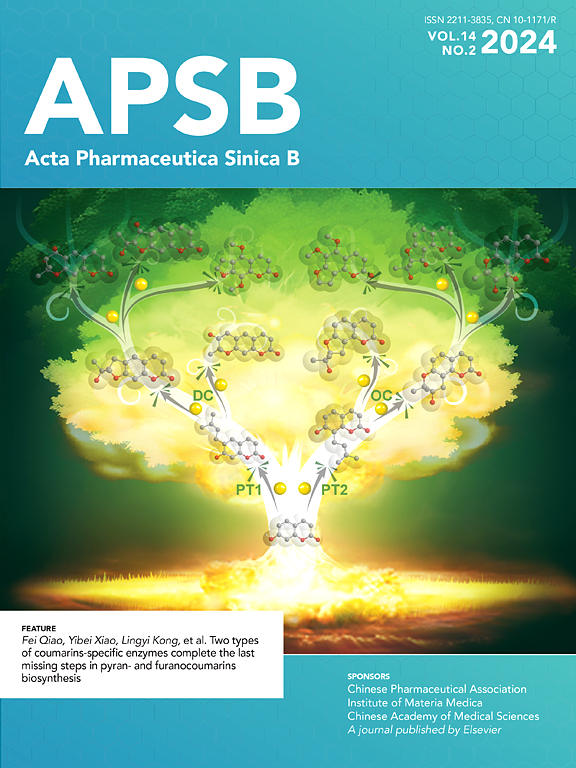Synthesis, preclinical evaluation and pilot clinical study of a P2Y12 receptor targeting radiotracer [18F]QTFT for imaging brain disorders by visualizing anti-inflammatory microglia
IF 14.7
1区 医学
Q1 PHARMACOLOGY & PHARMACY
引用次数: 0
Abstract
As the brain's resident immune cells, microglia perform crucial functions such as phagocytosis, neuronal network maintenance, and injury restoration by adopting various phenotypes. Dynamic imaging of these phenotypes is essential for accessing brain diseases and therapeutic responses. Although numerous probes are available for imaging pro-inflammatory microglia, no PET tracers have been developed specifically to visualize anti-inflammatory microglia. In this study, we present an 18F-labeled PET tracer (QTFT) that targets the P2Y12, a receptor highly expressed on anti-inflammatory microglia. [18F]QTFT exhibited high binding affinity to the P2Y12 (14.43 nmol/L) and superior blood–brain barrier permeability compared to other candidates. Micro-PET imaging in IL-4-induced neuroinflammation models showed higher [18F]QTFT uptake in lesions compared to the contralateral normal brain tissues. Importantly, this specific uptake could be blocked by QTFT or a P2Y12 antagonist. Furthermore, [18F]QTFT visualized brain lesions in mouse models of epilepsy, glioma, and aging by targeting the aberrantly expressed P2Y12 in anti-inflammatory microglia. In a pilot clinical study, [18F]QTFT successfully located epileptic foci, showing enhanced radioactive signals in a patient with epilepsy. Collectively, these studies suggest that [18F]QTFT could serve as a valuable diagnostic tool for imaging various brain disorders by targeting P2Y12 overexpressed in anti-inflammatory microglia.

求助全文
约1分钟内获得全文
求助全文
来源期刊

Acta Pharmaceutica Sinica. B
Pharmacology, Toxicology and Pharmaceutics-General Pharmacology, Toxicology and Pharmaceutics
CiteScore
22.40
自引率
5.50%
发文量
1051
审稿时长
19 weeks
期刊介绍:
The Journal of the Institute of Materia Medica, Chinese Academy of Medical Sciences, and the Chinese Pharmaceutical Association oversees the peer review process for Acta Pharmaceutica Sinica. B (APSB).
Published monthly in English, APSB is dedicated to disseminating significant original research articles, rapid communications, and high-quality reviews that highlight recent advances across various pharmaceutical sciences domains. These encompass pharmacology, pharmaceutics, medicinal chemistry, natural products, pharmacognosy, pharmaceutical analysis, and pharmacokinetics.
A part of the Acta Pharmaceutica Sinica series, established in 1953 and indexed in prominent databases like Chemical Abstracts, Index Medicus, SciFinder Scholar, Biological Abstracts, International Pharmaceutical Abstracts, Cambridge Scientific Abstracts, and Current Bibliography on Science and Technology, APSB is sponsored by the Institute of Materia Medica, Chinese Academy of Medical Sciences, and the Chinese Pharmaceutical Association. Its production and hosting are facilitated by Elsevier B.V. This collaborative effort ensures APSB's commitment to delivering valuable contributions to the pharmaceutical sciences community.
 求助内容:
求助内容: 应助结果提醒方式:
应助结果提醒方式:


